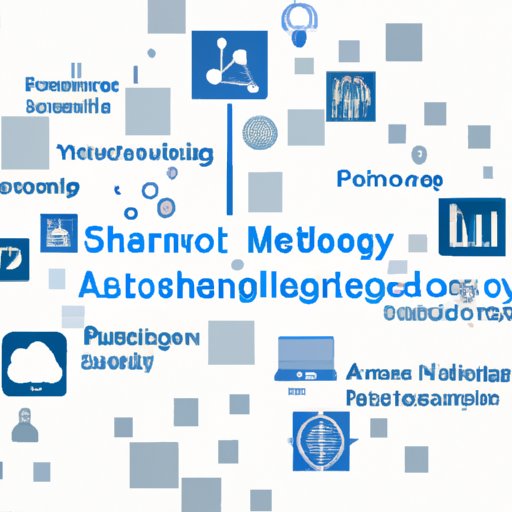Introduction
As the world grapples with the effects of climate change, the need for sustainable solutions has never been more urgent. Technology can play an important role in helping to achieve sustainability goals by providing innovative solutions that enable us to use resources more efficiently and reduce our environmental impact. To understand how technology can help sustainability, it is important to first define both terms.
Technology is the application of scientific knowledge for practical purposes. It is a broad term that encompasses a wide range of tools and processes, from computers and artificial intelligence (AI) to robotics and automation. Sustainability, on the other hand, is the practice of using resources responsibly so that they are available for future generations. By combining these two concepts, we can create solutions that are not only effective but also environmentally friendly.
Exploring the Benefits of Smart Technology for Sustainable Development
Smart technology is one of the most important tools in the sustainability toolkit. Smart technology refers to devices and systems that are connected to the Internet and can be programmed to respond to changes in their environment. These systems are able to collect data, analyze it, and make decisions based on that data. This enables them to automate processes, reduce energy consumption, and increase efficiency.
One of the main benefits of smart technology is that it can improve efficiency. For example, smart lighting systems can detect when a room is unoccupied and turn off the lights automatically, reducing energy consumption. Similarly, smart thermostats can adjust the temperature depending on the time of day or season, which can help to reduce heating bills.
Another benefit of smart technology is increased connectivity. By connecting devices, systems, and people, smart technology can facilitate communication between different stakeholders. This can lead to better collaboration, allowing individuals and businesses to work together more effectively to create sustainable solutions.
Finally, smart technology can also enhance collaboration. By connecting stakeholders, it can facilitate the sharing of ideas and resources, enabling teams to work together to create more effective and efficient solutions.

Harnessing the Power of Big Data to Improve Sustainability
Big data is another powerful tool that can be used to improve sustainability. Big data refers to large sets of data that can be used to gain insights into complex problems. By leveraging big data, organizations can access real-time information that can help them make informed decisions about sustainability initiatives.
One of the main benefits of big data is that it can provide organizations with access to real-time information. This can help them to monitor and track resource usage, identify trends, and make informed decisions about how to use resources more efficiently.
Big data can also be used to leverage data analysis for decision making. By analyzing data, organizations can identify patterns and correlations that can help them to make better decisions about sustainability initiatives. They can also use predictive analytics to anticipate future events and plan accordingly.
Examining the Role of Automation in Achieving Sustainability Goals
Automation is another important tool that can be used to help achieve sustainability goals. Automation refers to the process of streamlining processes and tasks by replacing manual labor with machines or software. Automation can help to reduce waste, minimize human error, and increase efficiency.
One of the key benefits of automation is that it can help to streamline processes. By automating repetitive tasks, organizations can save time and reduce costs. This can help them to become more efficient and reduce their environmental footprint.
Automation can also help to reduce waste. By streamlining processes, organizations can minimize the amount of resources they use, resulting in fewer resources being wasted. Automation can also help to minimize human error, as automated systems are less prone to mistakes than manual processes.

Utilizing Artificial Intelligence to Enhance Sustainability Practices
Artificial intelligence (AI) is another important tool that can be used to enhance sustainability practices. AI refers to computer systems that are capable of performing tasks that would normally require human intelligence. AI can be used to optimize resources, increase accuracy, and analyze patterns.
One of the main benefits of AI is that it can help to optimize resources. By leveraging AI, organizations can identify areas where resources are being used inefficiently and make changes accordingly. This can help them to become more efficient and reduce their environmental impact.
AI can also help to increase accuracy. By using AI to analyze data, organizations can make more informed decisions about sustainability initiatives. AI can also help to identify patterns that can be used to anticipate future events and plan accordingly.

Investigating the Impact of Cloud Computing on Sustainability Initiatives
Cloud computing is another important tool that can be used to enhance sustainability initiatives. Cloud computing refers to the use of remote servers to store and access data. By leveraging cloud computing, organizations can access data from any location, enabling them to collaborate more effectively and make better decisions.
One of the main benefits of cloud computing is that it can enhance data storage. By storing data in the cloud, organizations can reduce their reliance on physical hardware, resulting in fewer resources being used. This can help to reduce their environmental impact.
Cloud computing can also help to enhance data security. By storing data remotely, organizations can protect their data from unauthorized access. This can help to ensure that their data is secure and confidential.
Finally, cloud computing can streamline communications. By connecting stakeholders, it can facilitate the sharing of ideas and resources, enabling teams to work together more effectively to create sustainable solutions.
Conclusion
In conclusion, technology can play an important role in helping to achieve sustainability goals. From improved efficiency to increased connectivity, technology can help to create solutions that are not only effective but also environmentally friendly. Smart technology, big data, automation, AI, and cloud computing are all powerful tools that can be used to enhance sustainability initiatives. By harnessing the power of technology, organizations can create solutions that will help to ensure the future of our planet.
(Note: Is this article not meeting your expectations? Do you have knowledge or insights to share? Unlock new opportunities and expand your reach by joining our authors team. Click Registration to join us and share your expertise with our readers.)
